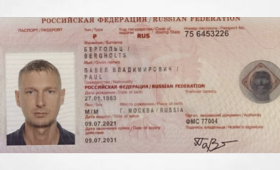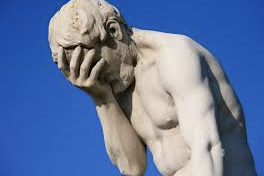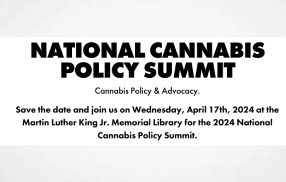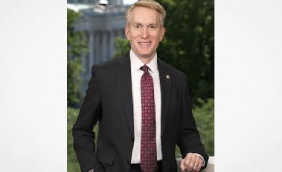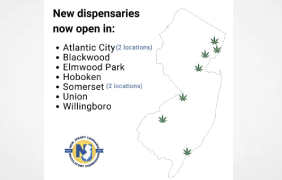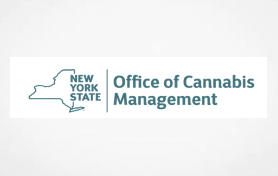By on
[Voice over for ESPN 30 for 30 series] What if we told you the United States Supreme Court would legalize medical marijuana? That the unlikely hero of the story was Clarence Thomas? And that he would work with the most liberal justices to make it happen. Sometimes you don’t know how high you can get until you really try. On the next 30 for 30: Highly Legal.
Hear us out, and no, we haven’t been using the product as we write this.
Congress Is Unlikely to Legalize Marijuana Any Time Soon
If you’ve been paying attention, you know that the current Congress is unlikely to legalize marijuana. Sure, late last year President Biden announced what he described as steps to “end” the federal government’s “failed approach” to marijuana. Specifically, he (1) issued mass pardons for federal convictions of simple marijuana possession and encouraged governors to do the same for state-level marijuana offenses, and (2) ordered Secretary of Health and Human Services Xavier Becerra “to initiate the administrative process to review expeditiously how marijuana is scheduled under federal law.” We’ve expressed skepticism that the pre-election announcement was more of a political than substantive move by the president and is unlikely to yield an immediate change to the federal legal status of marijuana.
And while we’ve expressed some optimism that the House of Representatives may pass a comprehensive legalization bill, any such legislation seems dead on arrival in the closely divided and more conservative Senate.
Enter the High Court.
Supreme Court Previously Upheld the Prohibition on Marijuana
Nearly 20 years ago, that very issue came before the U.S. Supreme Court. In Gonzales v. Raich, 545 U. S. 1, 5 (2005), the Court held that Congress’ power to regulate interstate commerce authorized it “to prohibit the local cultivation and use of marijuana.”
In legal jargon, the Court rationalized that Congress had “enacted comprehensive legislation to regulate the interstate market in a fungible commodity” and that “exemption[s]” for local use could undermine this “comprehensive” regime. The Court stressed that Congress had decided “to prohibit entirely the possession or use of [marijuana]” and had “designate[d] marijuana as contraband for any purpose.” Prohibiting any intrastate use was thus, according to the Court, “‘necessary and proper’” to avoid a “gaping hole” in Congress’s “closed regulatory system.”
Translated to non-legal jargon: The Controlled Substances Act (and in particular, the prohibition on marijuana) was part of a comprehensive regime to ensure that marijuana would be illegal nationwide, and any exception to that rule threatened to defeat the entire purpose of the act. Maybe that was true, maybe not. But no reasonable person can dispute that federal marijuana policy has changed since 2005.
Two years ago, the Court declined to hear a case — Standing Akimbo, LLC v. United States — about 26 U.S.C. § 280E. Title 26, better known as the Internal Revenue Code, deals entirely with taxes and governs many Americans’ favorite federal agency — the IRS. Section 280E deals specifically with businesses that traffic in controlled substances prohibited by federal or state law. In theory, the law is meant to prevent illegal drug traffickers from claiming common tax deductions for business expenses. In practice, it creates massive tax burdens on state-legal cannabis operations. Standing Akimbo challenged the notion that such state-legal cannabis operations should be treated the same as illegal drug traffickers.
In short, the case was about whether a business that operates legally in Colorado should be saddled by excessive federal taxes simply because it was subject to unenforced federal laws.
In conjunction with the Court’s refusal to hear the case, Justice Thomas issued a non-binding statement in which he questioned whether the rationale of the Raich decision still held true. For starters, he noted:
Whatever the merits of Raich when it was decided, federal policies of the past 16 years have greatly undermined its reasoning. Once comprehensive, the Federal Government’s current approach is a half-in, half-out regime that simultaneously tolerates and forbids local use of marijuana.
Despite what you think of federal marijuana policy or Justice Thomas, he ain’t wrong.
The Facts of the Standing Akimbo Case
The petitioners operated a medical-marijuana dispensary in Colorado, as state law permitted.
As the Court explained:
At issue in the case was a provision of the Tax Code that allows most businesses to calculate their taxable income by subtracting from their gross revenue the cost of goods sold and other ordinary and necessary business expenses, such as rent and employee salaries. But because of a public-policy provision in the Tax Code, companies that deal in controlled substances prohibited by federal law may subtract only the cost of goods sold, not the other ordinary and necessary business expenses. See 26 U. S. C. §280E.
Under that rule, a business that is still in the red after it pays its workers and keeps the lights on might nonetheless owe substantial federal income tax. As things currently stand, the Internal Revenue Service is investigating whether petitioners deducted business expenses in violation of §280E, and petitioners are trying to prevent disclosure of relevant records held by the State. In other words, petitioners have found that the Government’s willingness to often look the other way on marijuana is more episodic than coherent. This disjuncture between the Government’s recent laissez-faire policies on marijuana and the actual operation of specific laws is not limited to the tax context. Many marijuana-related businesses operate entirely in cash because federal law prohibits certain financial institutions from knowingly accepting deposits from or providing other bank services to businesses that violate federal law. Cash-based operations are understandably enticing to burglars and robbers. But, if marijuana-related businesses, in recognition of this, hire armed guards for protection, the owners and the guards might run afoul of a federal law that imposes harsh penalties for using a firearm in furtherance of a drug trafficking crime. A marijuana user similarly can find himself a federal felon if he just possesses a firearm. Or petitioners and similar businesses may find themselves on the wrong side of a civil suit under the Racketeer Influenced and Corrupt Organizations Act.
Put simply, Justice Thomas expressed concern that “[t]his contradictory and unstable state of affairs strains basic principles of federalism and conceals traps for the unwary.”
Justice Thomas’s Problem with Raich in the Current Landscape
Justice Thomas then laid out all of the ways that marijuana is no longer the subject of a comprehensive nationwide prohibition and the various mixed signals sent by the federal government in recent years:
- In 2009 and 2013, the Department of Justice issued memoranda outlining a policy against intruding on state legalization schemes or prosecuting certain individuals who comply with state law.
- In 2009, Congress enabled the District of Columbia’s government to decriminalize medical marijuana under a local ordinance.
- In every fiscal year since 2015, Congress has prohibited the Department of Justice from “spending funds to prevent states’ implementation of their own medical marijuana laws.”
- Nearly 40 states allow medicinal marijuana use, and approximately 22 of those states (and D.C.) also allow recreational use.
Given all these developments, according to Justice Thomas, “one can certainly understand why an ordinary person might think that the Federal Government has retreated from its once-absolute ban on marijuana.” Further, “[o]ne can also perhaps understand why business owners in Colorado, like petitioners, may think that their intrastate marijuana operations will be treated like any other enterprise that is legal under state law.”
Justice Thomas concluded:
Yet, as petitioners recently discovered, legality under state law and the absence of federal criminal enforcement do not ensure equal treatment.
…
The federal government’s current approach to marijuana bears little resemblance to the watertight nationwide prohibition that a closely divided Court found necessary to justify the government’s blanket prohibition in Raich.
What, if Anything, Is the Significance of Justice Thomas’ Statement?
Let’s not bury the lede: Justice Thomas’ opinion does not have precedential value. It was not an opinion of a majority of the Court, nor was it joined by any other then-current justice. So, on the one hand, perhaps it was an aberration to be given the same attention as a number of other opinions by Justice Thomas that are unlikely to become the law of the land. Then again, it was simply a statement issued in conjunction with the denial to hear a case, and perhaps the other justices had little incentive to go along with, or offer any other opinions to, the statement.
In order to change the law, the Court will need to agree to hear and decide a case that calls the question of whether the federal government’s prohibition of marijuana is consistent with the Constitution. If that happens, there will need to be five justices that agree, on some grounds, that the Controlled Substances Act is unconstitutional as applied to the cultivation, processing, sale, and possession of marijuana.
What Is the Likelihood of the Supreme Court Overruling the Marijuana Prohibition?
Counting noses at the Supreme Court is always a difficult task. And, right or wrong, we believe it is particularly difficult when a case brings the Court to the intersection of deeply held doctrinal beliefs and deeply held policy choices.
Justice Thomas has already tipped his hand that he may be willing to overrule the marijuana provisions in Raich. Let’s assume that one other conservative justice would go along with that position; perhaps Justices Alito and/or Gorsuch. That provides two or three votes for overruling the federal ban on (at minimum) medical marijuana.
Is there some other basis on which the liberal justices may find that Congress’s prohibition on the use of medical marijuana is impermissible? Yes, maybe, although on entirely different grounds. They may be in favor of allowing states to permit marijuana regimes, but they may also be reluctant to reign in the federal government’s Commerce Clause authority. After all the Commerce Clause is the basis of a number of federal laws that the liberal justices would not want to upend.
We believe the three liberal justices on the Court, however, would be receptive to the idea that the use of marijuana for medical purposes is a fundamental right. Ironically, the Ninth Circuit’s 2007 opinion on remand after the Raich decision – even though it ultimately concluded that there was no fundamental right to the use of marijuana for medical purposes – provides a straightforward and remarkably prescient roadmap for the current liberal justices to conclude that such a right does now exist.
When examining the role of medical marijuana in American history, the Ninth Circuit noted:
It is beyond dispute that marijuana has a long history of use — medically and otherwise — in this country. Marijuana was not regulated under federal law until Congress passed the Marihuana Tax Act of 1937, and marijuana was not prohibited under federal law until Congress passed the Controlled Substances Act in 1970. There is considerable evidence that efforts to regulate marijuana use in the early-twentieth century targeted recreational use, but permitted medical use. By 1965, although possession of marijuana was a crime in all fifty states, almost all states had created exceptions for persons for whom the drug had been prescribed or to whom it had been given by an authorized medical person.
On the question of whether a right that may not have been recognized as fundamental in the past may nonetheless be recognized as a fundamental right, the Court used Lawrence v. Texas as an example:
The Lawrence Court noted that, when the Court had decided Bowers v. Hardwick, twenty-four States and the District of Columbia had sodomy laws. By the time a similar challenge to sodomy laws arose in Lawrence in 2004, only thirteen states had maintained their sodomy laws, and there was a noted “pattern of nonenforcement.” The Court observed that “times can blind us to certain truths and later generations can see that laws once thought necessary and proper in fact serve only to oppress.”
On the other hand, the Ninth Circuit was troubled by the fact that medical marijuana had not yet been adopted by a sufficient number of states:
Though the Lawrence framework might certainly apply to the instant case, the use of medical marijuana has not obtained the degree of recognition today that private sexual conduct had obtained by 2004 in Lawrence. Since 1996, ten states other than California have passed laws decriminalizing in varying degrees the use, possession, manufacture, and distribution of marijuana for the seriously ill.
But the court noted that it may have reached a different conclusion if medical marijuana had been permitted in more states and more popularly accepted:
We agree with Raich that medical and conventional wisdom that recognizes the use of marijuana for medical purposes is gaining traction in the law as well. But that legal recognition has not yet reached the point where a conclusion can be drawn that the right to use medical marijuana is “fundamental” and “implicit in the concept of ordered liberty.” For the time being, this issue remains in “the arena of public debate and legislative action.”
For now, federal law is blind to the wisdom of a future day when the right to use medical marijuana to alleviate excruciating pain may be deemed fundamental. Although that day has not yet dawned, considering that during the last ten years eleven states have legalized the use of medical marijuana, that day may be upon us sooner than expected. Until that day arrives, federal law does not recognize a fundamental right to use medical marijuana prescribed by a licensed physician to alleviate excruciating pain and human suffering.
Whether you agree with analysis of the Ninth Circuit, it would border on intellectual dishonesty to argue that the concerns of the Ninth Circuit in 2007 have – rightly or not – been allayed at this point, for all of the reasons listed above by Justice Thomas in his statement accompanying the Court’s refusal to hear the Standing Akimbo case. Put another way, everything that the Ninth Circuit stated had not yet occurred in 2007 has in fact occurred by 2023. It is extremely difficult to imagine that the same court would reach the same conclusion now.
Although conservative and liberal justices probably wouldn’t agree in the reasoning, a concurrence in the outcome using separate doctrinal rationales could lead to the legalization of medical marijuana at the federal level. In a win for both ideological camps, the decision could end with conservatives striking down Commerce Clause overreach and liberals championing fundamental rights – and America would end up with federally legal medical marijuana.
But Wouldn’t That Leave Marijuana Laws to the States?
Probably, but not necessarily. It depends on how the Court rules.
The Court could rule that the CSA is ineffective for cannabis, effectively decriminalizing cannabis federally. This would allow interstate cannabis markets to open immediately, and many issues with banking cannabis funds, moving cannabis intra- and interstate, and marketing cannabis would disappear. However, this would likely maintain cannabis regulation at the state level, meaning states would have the power to decide whether they wanted to legalize cannabis and in what forms. This would probably leave most marijuana laws to the states, like how most alcohol regulation is left up to states. As we’ve previously predicted, the post-Prohibition era in the 21st century would probably look a lot like the post-Prohibition era in the 20th.
Or the court could rule that marijuana has valid medical uses and the CSA is invalid as to the current scheduling. SCOTUS may force the FDA and DEA to reschedule cannabis, creating ripple effects if marijuana is treated as a federally regulated pharmaceutical product. These ripple effects would touch the entire cannabis life cycle and national market, including cultivation, transportation, marketing, sales, methods of ingestion, banking, and interstate trade. In this scenario, much of the regulation would be left up to the federal government. This would bring the medical marijuana industry into the complex web of federal prescription drug policy and would very well weed out all but the largest conglomerates from the industry — with one likely outcome being the cannabis industry being dominated by the existing pharmaceutical industry.
* * *
We acknowledge that the series of events we set out here would require the combination of the right Supreme Court at the right time hearing the right case. And it may seem as though it would require strange bedfellows, but we are reminded of the words of Marcel Achard: “The bedfellows politics made are never strange. It only seems that way to those who have not watched the courtship.”
Source:
